The Deportation of Jews from Hungary and the Łódź Ghetto to Auschwitz in 1944
An Introduction
1. Hungary
The last revisionist writings on the deportation of Hungarian Jews to Auschwitz date back more than twenty years: Jürgen Graf’s article “What happened to the Jews Who Were Deported to Auschwitz but Were Not Registered There?” (Graf 2000a&b), and the related response by Arthur Butz titled “A Reply to Jürgen Graf: On the 1944 Deportations of Hungarian Jews,” plus the articles by Richard A. Widmann and Samuel Crowell, headlined “Transfers to the Reich. The Unregistered Inmates of Auschwitz” and “Beyond Auschwitz: New Light on the Fate of the Hungarian Jews,” respectively. My contribution to this exchange was the 2001 article headlined “The Deportation of Hungarian Jews from May to July 1944.”
In 2002 appeared Christian Gerlach and Götz Aly’s book whose German title translates to The Final Chapter: Realpolitik, Ideology and the Murder of Hungarian Jews 1944-1945, in which they mentioned a hitherto unknown document they had found in the archives of the Yad Vashem Institute. The German headline of this document translates to “Compilation of the transports /men/ arriving in Concentration Camp Auschwitz II Birkenau in the period from 16 May to 20 Sept. 1944, Lambach, 5 August 1945. For the correctness: sgd. Leo Glaser, Director of the Insurance Institute of the Austrian Federal States, Vienna.”
In the book, the document is first mentioned in a marginal context (Gerlach/Aly 2004, p. 275, note 133):
“Trains from Hungary – 141 in all – arrived at Auschwitz almost daily from 16 May to 11 July, none during the periods of 19-26 June and 2-6 July.”
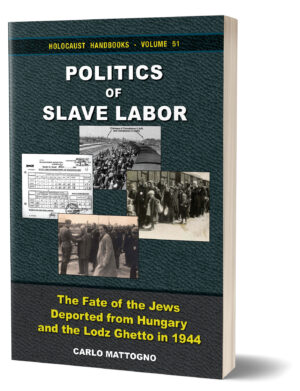 The second mention is also rather terse (ibid., p. 286):
The second mention is also rather terse (ibid., p. 286):
“The assumption that the people from the transports arriving at night were killed indiscriminately also proves to be clearly wrong. This is shown by numerous survivors’ reports and a list newly discovered by us, according to which male Hungarian Jews from 141 deportation trains were selected as forced laborers in Birkenau between May 16 and July 11, 1944. [note 185].”
I will discuss the related note later. After a fleeting mention a few pages later (ibid., p. 292, note 221), Gerlach and Aly return to it in their calculation of Hungarian Jews – registered and unregistered – who were interned at Auschwitz (ibid., p. 294):
“All this gives a picture that is as shocking as it is conclusive as to the total number of Hungarian Jews selected for forced labor at Auschwitz, and not immediately murdered. We estimate them at a little more than 100,000 people, a quarter of the deportees.”
Then they note that the number of Hungarian Jews (men and women) recorded in the A series is 29,210 according to Danuta Czech’s Auschwitz Chronicle, and they refer to Glaser’s list as follows:
“The list of male forced laborers selected from among Hungarian Jews at Auschwitz-Birkenau between 16 May and 11 July includes 55,937 men. If women made up about half of those ‘selected’ for forced labor,[[1]] as indicated by the ratio of Jewish men to women who returned to Hungary after the war (see chapter 7), the total number of those provisionally excluded from murder may have been about 110,000.”
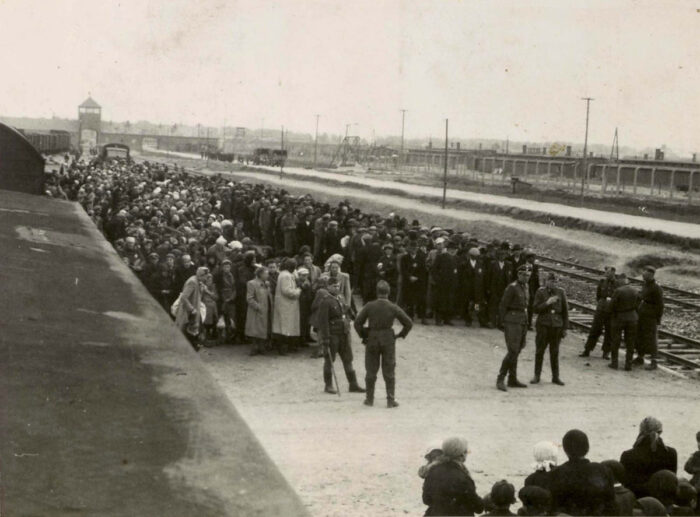
In confirmation of this figure, Gerlach and Aly cite two testimonies:
“Dieter Wisliceny testified after the war that 108,000 Hungarian Jews had been selected for forced labor in Auschwitz. Even more serious is the post-war statement of Fritz Schmelter, the former head of the ‘Jägerstab,’ hence an important functionary, that about 100,000 Hungarian Jews had been used as forced laborers.” (Gerlach/Aly, pp. 295f.)
The overall balance of Hungarian Jews outlined by the authors is as follows:
“About 110,000 of them were taken to Auschwitz between May and July, where most of them were redistributed to other camps. […] Another 320,000 Hungarian Jews were murdered in the gas immediately after their arrival at Auschwitz-Birkenau.” (ibid., p. 375)
The starting point is the transport from Hungary of 437,402 or 434,351 Jews in 147 trains (ibid., p. 275), of which four trains with 15,000 people were diverted to Strasshof, Austria, one to Bergen-Belsen, and one with an unknown destination. Therefore, about 425,000 Hungarian Jews arrived at Auschwitz.[2] Subtracting the 110,000 mentioned earlier, they arrive at a figure of 320,000 (but it should be 315,000).
Despite the obvious historiographical force of this disruptive document, Gerlach and Aly did not care to prove its authenticity and veracity; indeed, they did not even ask who this Leo Glaser was, but merely wrote (ibid., p. 286):
“The authenticity of this document, which lists the number of male Jews selected for work from 141 transports from Hungary with the respective day (men classified as unfit for work and instantly murdered were certainly not registered as such), is confirmed, despite dubious documentation, by its correspondence with other documents, especially the match of the dates with those of the list of Slovak railroad officials (Braham, Politics, pp. 1403-1405).”
This explanation is bafflingly superficial. Even assuming that there is a real “match of the dates,” how can this fact prove that the figures given in the Glaser list are correct? On the other hand, since the transports from Hungary left practically every day (with two breaks from June 19 to 26 and July 2 to 6, 1944), and Košice [Kassa], where the “list of Slovak railroad officials” was compiled (ibid., p. 275), is about 300 km from Auschwitz, the dates of passage through this location could very hardly coincide with the dates of departure from Hungary and arrival in Auschwitz. This issue will be addressed in Chapter 1.4.
The section of the book that contains the data I set out above (“‘Selections’ and mass murder at Auschwitz,” ibid, pp. 274-298) denotes an unusual lack of critical sense and uncertainty regarding sources. For example, the authors devote ample space to the “Report of summer 1944” of an “unknown woman from Szolyva”– a rather fanciful account, as I have documented in another study (Mattogno 2021b, pp. 198f.) – and claim to establish its reliability on the basis of irrelevant details (Gerlach/Aly, pp. 285f.); they cite as a reliable witness the notorious impostor Miklós Nyiszli (ibid., p. 298); they know Otto Wolken’s “Quarantine List” (to which I will return below) only from this secondary source: “Höß, Kommandant, p. 163, footnote by the editor Martin Boszat” (ibid., p. 295, note 235. Broszat’s reference to the “quarantine station” is on p. 164, though). They also inexplicably transcribed the file memo about Pohl’s visit to Auschwitz: “‘Construction of 6 corpse cremors [crematoria]’ in camp sections Ba I and II,” although that phrase clearly states “Construction of 6 corpse chambers [=morgues] in BaI and II” (ibid., p. 294; this is Nuremberg Document NO-2359). However, they should be praised for having published the Glaser list.
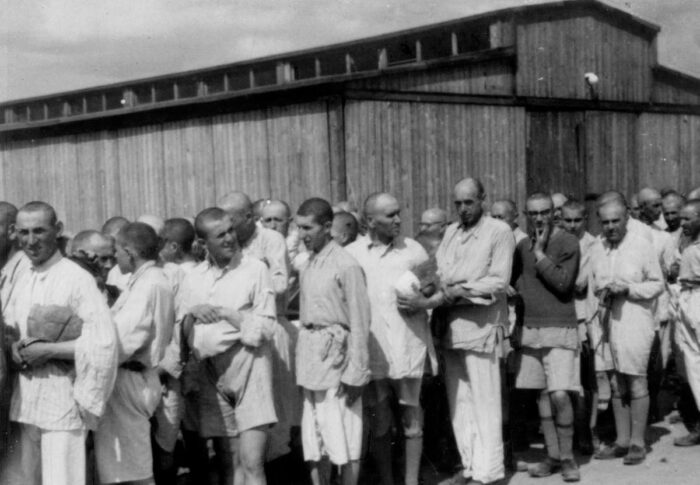
Gerlach and Aly’s conclusions were promptly noticed by Fritjof Meyer, who, the same year, drafted his well-known article, whose German headline translates to “The Number of Victims of Auschwitz. New Insights through New Archive Findings.” In it, he observed (Meyer, p. 638):
“The fate of the deportees from Hungary in 1944 requires its own investigation. If we rely solely on the information provided by Danuta Czech, 60 trains arrived at Birkenau between mid-May and early July.34 Each transport contained 3,000 persons, so that according to this 180,000 would have arrived, of whom, according to Czech, 29210 received a registration number. 110 000 were transferred to other camps, and according to Czech probably 40564 people were killed in the gas in the month of October 1944 alone.”
In his note 34, Meyer refers indirectly to the Glaser list:
“Pressac, Menschen [Fn. 11],[3] pp. 198f., p. 201, reads from Czech only 53 Hungarian transports from May 2 to July 11, 1944 = 160,000 people, and concludes rather arbitrarily to a total of 240,000 arrivals. According to a dubious document, 141 trains, in: Christian Gerlach/Götz Aly: Das letzte Kapitel. Munich 2002, pp. 275, 286.” (ibid.)
Two years later, John C. Zimmerman published a scathing critique of the article in question, in which he also addressed the Glaser List:
“Meyer simply ignored all of this evidence. But even worse was his treatment of the evidence he did use. He based his claim that 110,000 Hungarian Jews were transferred from Auschwitz to other camps on a recent book by Christian Gerlach and Götz Aly. They based their conclusion on a document from the Yad Vashem Archives (Gerlach and Aly, 2002, pp 295–296). The author also obtained a copy of this document from Yad Vashem. It does not support their contention. The six page document was prepared after the war and lists over 55,000 Hungarian male Jews arriving at Auschwitz in addition to other arrivals. Gerlach and Aly doubled the number for female Jews since none were listed in the report. However, the document says nothing about those Jews being transferred from Auschwitz to other camps or that the Jews listed in the document even survived after entering the camp. Rather, it is merely an incomplete report by an unfamiliar individual, apparently not associated with Auschwitz, based on very limited information available to him on prisoner arrivals into the camp (Glaser, 1945).” (Zimmerman, p. 253)
The final judgment, patently false, was dictated only by excessive polemical ardor. After this, the dispute took place only online, which lasted for a few years.
In 2006, the ARC (Aktion Reinhard Camps) website devoted an article specifically to the matter.[4] The authors first noted that the number of Jews admitted to the camp in the above-mentioned period was not 55,937, but about 52,000. Then they verified the veracity of the document with a “Table of comparison of the data in Glaserʼs list with the information from D. Czechʼs Auschwitz Chronicle (1989).” Regarding the number of transports, they noted that
“the most complete list until now – the list of the Hungarian transports passing through Kosice – contains 136 entries for the period of 14 May to 9 July. Glaser’s list has 142 relevant entries for the period of 16 May to 11 July (Gerlach and Aly erroneously state that 141 transports are listed; if we disregard two entries which state that 3 and 5 Jews were selected, then there are 140 transports; if we take them into account, then we have 142 transports). Thus, Glaser’s information is the most complete.”
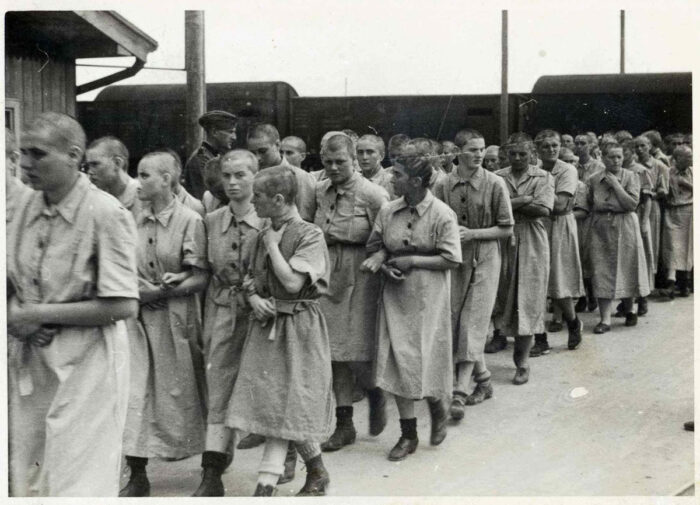
They concluded
“that Leo Glaser’s list of Hungarian transports is indeed generally correct, and thus the number of the Hungarian Jews gassed in Birkenau upon arrival during the Hungarian action must be reduced to about 320,000.”
Regarding Glaser and the circumstances of the document’s drafting, the ARC authors stated that Glaser had been foreman at the inmate clothing department at Auschwitz, which lent credibility to him and his list.
In a 2007 article, former deportee Gábor Hirsch published the document drafted by Glaser, and argued its historical value based primarily on the so-called Kassa List (see Chapter 1.4), and observed:[5]
“One has to wonder how it is possible that this explosive document could remain unnoticed / undiscovered – at least for the general public – for 58 years, and that the discovery did not make big waves in Hungary […].”
In 2017, he included the text of this article with some modifications in his book Békéscsaba, Auschwitz-Birkenau and Back, which contains precisely the paragraph “Leo Glaser’s List” (Hirsch, pp. 97-115), to which I will return later.
In 2008, Michael Honey published an article online, titled “Research Notes on The Hungarian Holocaust,” which made extensive use of the Glaser List, the reliability of which was simply assumed, as reflected in his brief presentation of this issue:[6]
“The Leo Glaser list was made by the Capo of the Kleiderkammer (Clothing Department) at the arrival rail ramp in Birkenau Auschwitz. This list records only date of arrival of each train, a general description of the prisoners such as ‘Hungarian Jews’ and it records the number of men selected to be prisoners able to do manual labour.”
Honey also presented the original text of the Glaser List, and compiled a table (“Train Analysis of the Hungarian Genocide Action”) in which he compared the “Gaško List” (the list of trains that passed through Kassa; see Chapter 1.4) and the Glaser List. By assuming “that 10% more women were selected than men,” and by deducting from the number of deportees the men and women “selected,” he believed he could calculate the number of victims “gassed,” as I will explain more fully later.
In subsequent Holocaust literature, the first references to the Glaser List resurfaced only many years later. In an article that appeared in 2014, Gabriel Mayer mentioned it in a “Table 2. Deportations (tabulated by author from the ‘Leo Glaser’ list)” (Mayer, p. 102).
The following year, Stefan Hördler, Christoph Kreutzmüller and Tal Bruttmann dusted off the Glaser List with great ease, as if it were a document known to all, and of proven authenticity and veracity:[7]
“According to a list by Auschwitz survivor Leo Glaser, only 53172 Jewish men from Hungary were registered in Birkenau in the period from 16 May to 22 July. No figures are available for women. Leo Glaser gives the percentage of registered prisoners as about 20 percent. With a similar proportion of women and men, it is estimated that 325,000 to 349,000 Hungarian Jews were murdered directly upon arrival, when comparing the number of deportees and those registered.”

In a book published in 2018, Hungarian historian Szita Szabolcs referred to the Glaser List with equal ease, presenting it as follows:
“In the tragedy of Hungarian Jewry, Leo Glaser’s important train list is an authoritative document [hiteles]. It is worthy of attention, because it contains valuable data on the Hungarian convoys that arrived at Birkenau.” (Szabolcs 2018, p. 152)
In this sense, he used Glaser’s data several times (ibid., pp. 152f., 156f.).
In a book that appeared in 2022, Anna-Raphaela Schmitz evoked the Glaser List in these terms (Schmitz, p. 376):
“Research currently assumes that around 350,000 Jews from Hungary were murdered in Birkenau,”
with the following source reference in a footnote:
“Cf. Compilation by former camp inmate Leo Glaser dated 5 Aug. 1945, Nurembg. Doc. PS-3686.”
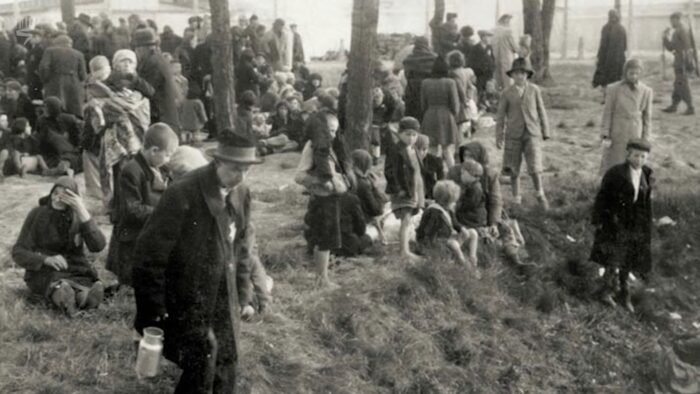
The author does not explain which “research” she is referring to, nor how the Glaser List can prove that 350,000 Hungarian Jews were exterminated in Auschwitz.
Also in 2022, Ian Baxter’s book Images of War: Operation Höss. The Deportation of Hungarian Jews to Auschwitz-Birkenau May-July 1944, appeared, in which he included, as his “Appendix IV,” a table headlined “Hungarians Deported and Selected for Labor,” with a transcription of the data from the Glaser List (ibid., pp. 129f.), which he also reproduced as illustrations (ibid., pp. 135-139).
According to him, 52,752 deportees are recorded in this this list, but the sum of the figures he transcribed is 52,036; moreover, three figures are transcribed incorrectly: 20 May: 647 instead of 447; 23 May: 575 instead of 573; 29 June: 5 deportees are recorded who were not Hungarians but Polish Jews (“poln. Juden”). The correct figure is 51,829 (see Chapter 1.3).
The book’s “Appendix V” contains a “Detailed Listing of Male and Female Train Transports” (ibid., pp. 131-134) which I will analyze later.
Considering the merit of these historians, one should not be surprised that they did not take the slightest care to examine the three fundamental questions raised by the Glaser list: authenticity, veracity and completeness.
The first is the most difficult to address, but, in the end, also the least important: what really matters is whether the list in question corresponds to reality and whether it is complete.
These three problems – authenticity, veracity and completeness – are dealt with organically in Chapter 7. A similar treatment is also given with regard to the list of trains that passed through Kassa (see Chapter 1.4).
In the Italian edition of my article on the subject mentioned earlier, which appeared in 2007 as a booklet, I relegated to an appendix a brief analysis of Glaser’s transport list (“A New Document on the Deportation of Hungarian Jews to Auschwitz”). I merely noted in it that the list confirmed the number of Hungarian Jews who were admitted to Auschwitz as fit for work, some 107,200, which I had established with another method thanks to the sources then available (Mattogno 2007, pp. 59f.).
The reason for this caution, in retrospect and hindsight, was rather naive, for I observed (ibid., p. 60):
“The Auschwitz Museum has not yet commented on this matter, so I am relegating to the appendix the treatment of this document, which is currently kept at the Yad Vashem Institute in Jerusalem.”
In fact, the Auschwitz Museum waited 20 years before reluctantly mentioning this document in its historical context (see Chapter 1.8). The reasons for this hesitation will be exposed in Part Two.
* * *
Despite the numerous Holocaust books that have appeared so far, there are still issues that have barely been touched upon, and in any case have never been set forth organically. The most important of them concerns the Birkenau “Transit Camp”: how many Jewish deportees were admitted there without being registered? And how many were transferred from this camp section to other camps?
The present study systematically analyzes this and other questions, and attempts to provide well-founded answers.
2. Łódź Ghetto
The Glaser List also provides detailed data regarding the admission to the Auschwitz Camp of Jews evacuated from the Łódź Ghetto in August 1944. The most accurate study on this subject is a 2005 book by Andrzej Strzelecki, historian of the Auschwitz Museum. It is titled The Deportation of Jews from the Łódź Ghetto to KL Auschwitz and Their Extermination. In the Introduction to the present work, I wrote that the Auschwitz Museum has deliberately ignored the Glaser List for 20 years. This is clear from the following observation by Strzelecki (2005, p. 9, footnotes 5):
“In their book entitled Das letzte Kapitel: Realpolitik Ideologie und der Mord an den ungarischen Juden 1944/1945 (Stuttgart-München, 2002) Christian Gerlach and Götz Aly concentrate chiefly on the background and execution of the deportation of Jews from Hungary to KL Auschwitz, but they do not examine in such detail the fate of those Hungarian Jews who were ‘deposited’ in the so-called ‘transit camp’ of KL Auschwitz. This subject requires further research.”

He learned from this book that the Yad Vashem Institute has a “Compilation of the transports /men/ arriving in Concentration Camp Auschwitz II Birkenau in the period from 16 May to 20 Sept. 1944, Lambach, 5 August 1945. For the correctness: sgd. Leo Glaser, Director of the Insurance Institute of the Austrian Federal States, Vienna.” Can we believe that he did not even have the curiosity to glance at a document with such a sensational title? Especially since he himself stated that the issue of the Birkenau Transit Camp “requires further research”?
Strzelecki tried to fill this gap-or rather, omission-by analyzing the transports of Jews from the Łódź Ghetto who were directed from this Transit Camp to other camps or subcamps.
Seven years later, in 2012, Strzelecki mentioned the Glaser List in passing in No. 27 of the Zeszyty Oświęcimskie (Auschwitz Notebooks). Here, in the context of a 2011 review of a book by Gábor Hirsch, in which Strzelecki listed the evidence adduced by this former Hungarian deportee, he mentioned,
“a transport list of male inmates of various nationalities who arrived at Auschwitz in the period from 16 May to 20 September 1944 (more precisely, a list of men interned at the camp as registered inmates by name or as inmates in storage[8]) compiled in 1945 in Austria by former inmate Leo Glaser on the basis of notes illegally made at the Auschwitz Camp. Discounting internet sources, this document was first published in G. Hirsch’s book (with the permission of the Yad Vashem Institute in Jerusalem, where it is preserved).” (Stzrelecki 2012, p. 323)
As noted in Part One of the book introduced here, the Glaser List was later published again by G. Hirsch, and then by I. Baxter (2022). By then, the Auschwitz Museum could no longer ignore it. Hence, in 2022, Piotr Setkiewicz was forced to mention it in the condescending way set out earlier, a mere reference without any hint of critical analysis.
Before examining Strzelecki’s theses in the above-mentioned book, a brief historical background of the problem is necessary, and that is how the section on the Lodz Ghetto starts in the book introduced here.
* * *
Print and eBook versions of the complete book are available from Armreg at armreg.co.uk.
Endnotes
| [1] | As reflected in Pohl’s telegram to Himmler of 26 May 1944, quoted at the top of the page; see Chapter 1.2. of the book introduced here. |
| [2] | Gerlach/Aly, pp. 275f. The figure of 425,000 is a bit too high, because subtracting from the highest figure of deportees (Veesenmayer’s) the four trains with 15,000 deportees of the six diverted trains gives (437,402 – 15,000 =) 420,712 deportees, and even less if the other two diverted transports are deducted (the one diverted to Bergen-Belsen had 1,690 deportees). I return to this later in the book introduced here. |
| [3] | Here Meyer erroneously cited the second edition of Hermann Langbein’s book Menschen in Auschwitz, which he mentioned in footnote 28; the reference should have pointed to Pressac 1994a. |
| [4] | “Hungarian Jews deported to Auschwitz. Last Update 18 September 2006,” online at http://www.deathcamps.org/occupation/glaser.htm. |
| [5] | G. Hirsch, “Die Leo-Glaser-Liste,” https://www.zukunft-braucht-erinnerung.de/glasers-liste. |
| [6] | http://www.zchor.org/hungaria. |
| [7] | Hördler/Kreutzmüller/Bruttmann 2015, p. 610. They repeated these statements almost verbatim in their book (idem, 2019, p. 42). Stefan Hördler was likely the author, because he had already considered the Glaser List, and expressed himself in similar terms, in a book by him published in 2015 (Hördler 2015), in which he came to the following conclusion (p. 299): “Based on these figures, it is estimated that 325,000 to 349,000 Hungarian Jews were murdered.” |
| [8] | “więźniów depozytowych,” term derived from the German term “Depot-Juden.” |
Bibliographic information about this document: Inconvenient History, 2023, Vol. 15, No. 4; taken, with generous permission from Castle Hill Publishers, from Carlo Mattogno, Politics of Slave Labor: The Fate of the Jews Deported from Hungary and the Lodz Ghetto in 1944, Castle Hill Publishers, Uckfield, November 2023
Other contributors to this document:
Editor’s comments:
